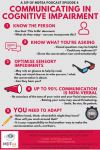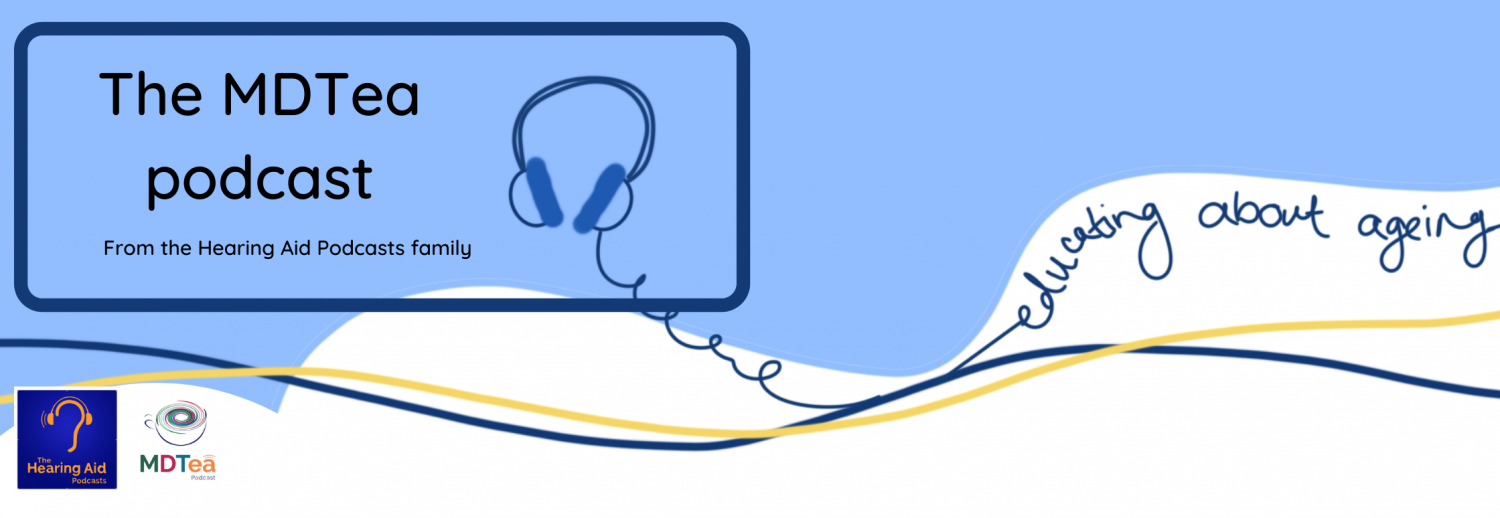Episode 1.4 Communication in Cognitive Impairment
MDTea Episode 4: Communication in Cognitive Impairment
Posted on 1st March 2016
Presented by: Jo Preston & Iain Wilkinson, Geriatricians at Surrey and Sussex Healthcare NHS Trust.
Core Faculty Contributors: Lucy Frost, Dementia Nurse Consultant at Sussex Community Trust.
Guest Faculty: Isla Jones – Speech and Language Therapist, Kings College Hospital, London.
 In this episode we will explore why communication can be challenging with those with cognitive impairment and look at some strategies that can be used to work around it to make interactions easier and more meaningful for all involved.
In this episode we will explore why communication can be challenging with those with cognitive impairment and look at some strategies that can be used to work around it to make interactions easier and more meaningful for all involved.
Here is a Sip of this week’s MDTea
CPD log
Click here to log your CPD online and receive a copy to your email.
You can download the show notes here.
Episode 4 Show Notes
Communication in cognitive impairment
___
Presented by: Dr Jo Preston & Dr Iain Wilkinson
Faculty:
Lucy Frost – Dementia Nurse
Isla Jones – SALT (Guest Faculty)
Broadcast Date: 01/03/2016
Learning Outcomes
Knowledge:
- To understand that cognitive impairment can affect a person’s ability to communicate
- To understand the term ‘augmentative and alternative’ communication
Skills:
- To develop your awareness of the effect of your verbal and non-verbal communication on your interactions with people with dementia
- To embrace the use of alternative techniques to enhance effective communication
Attitudes:
- To understand that communication is a two way process and that deficits in one party may require compensation by the other.
- To appreciate that deficits in communication with people with cognitive impairment do not reflect that they are not trying to communicate with you.
Definitions:
- Communication as verbal and non-verbal : Think about what is the point of communication?
- need to be able to
- decide what to say
- control your mouth and tongue to articulate
- process information
- recognise AND understand speech
- PLUS interpret all the non-verbal cues.
- Communication involves the interpretation and expression of emotions, wishes or words, usually in exchange with another person. So in this context, we are looking at how the pathological changes seen in dementias and deliriums interrupt this exchange and how you as the other half of the conversation can adapt.
Practical Definition:
Two main distinctions really in our routine practice: dementia vs delirium
Delirium is an acute onset decline affecting consciousness, which typically fluctuates. This can be HYPERactive, in which the person might be very vocal! HYPOactive, so sleepy or withdrawn OR mixed, so both. In between they may be able to interact normally.
- A key feature in delirium is usually inattention and distractibility
- may see this in not being able to follow a line of conversation, topic jumping around or not making sense.
Dementia is a progressive process which causes specific, then global, losses in function. Cognitive impairment that affects their activities of daily living.
- there are different types of dementia, each affects the brain in a particular pattern of decline.
- So for example Alzheimer’s typically starts in the area of the brain that codes memories, particularly the laying down of new memories so the person may not recall having had the same conversation earlier that day or week. Similarly they may not recall things that you have told them in conversation previously, or either having met you at all, which can make building relationships tricky.
- Compounding the relationship building aspect of communication is that problems with the temporal lobes can lead to difficulty recognising faces.
- Frontal lobes also important for social interaction so the ‘normalities or social norms’ of a conversation may be skewed, people may have reduced spontaneity in interactions or be more disinhibited in their behaviours or the content of the speech.
There are a few ways you can adapt your communication to help
- Body language
- As much of 90% of communication can be non-verbal, this is particularly relevant for people with a dementia or cognitive impairment.
- non-verbal communication can include many things including
- facial expression
- eye contact
- body language
- gestures
- touch
- tone of voice: in particular.
Hints and Tips about Dementia – from dementia web
person centred communication
- A strength based rather than impairment focused approach to communication
- focuses on supporting a person with dementia to use and retain their skills and abilities.
- Developed mainly by Tom Kitwood – you should go read about him and the concept of the cycle of dehumanisation. Also its part of the NICE guidance
Dementia: supporting people with dementia and their carers in health and social care
Alternative means of communication in cognitive impairment
Validation therapy
- Specific form of communication therapy.
- When looked at – very similar to the principles of person centred care
- there are 14 specific principles that make this what it is – look at page 3 of the reference.
Validation therapy for dementia (Cochrane Review)
Memory books use the written form
-
- aim is to compensate for the deterioration in linguistic and cognitive skills by replacing it with an alternative form of communication.
- the technical term for this is ‘augmentative and alternative communication’
- provides other ways to access memories and words for expressing and comprehension.
- memory books were index cards on a binder with relevant information regarding personal care. on each page was a description and a picture.
- they helped care home residents to express their wants and needs, as well as increasing active participation in their daily activities
- quality of conversations increased (non-task orientated + number of interactions).
- essentially a way to help access stored memories using graphical prompts.
Music: see alive inside and ‘interact’ art group stimulate more artistic areas of the brain.
- finding alternative ways in – to stimulate the person you are communicating with
- using music to access emotions, memories etc.
- advocated by age uk as a means of enhancing interaction and communication with patients with dementia
namaste:
- meaning – ‘to honour the spirit within’
- compassionate nursing care with music, therapeutic touch , colour, food treats and scents.
- shown to improve quality of life for older adults with dementia in care homes by reducing their behavioural symptoms
- links nicely to the idea that behaviours are all an attempt to communicate and the meaning of these can only really be understood when you understand the person you are looking after.. which links back to person centred care. for example – addressing people’s pain in care homes reduced by 17% the levels of agitation (and therefore maybe antipsychotic use)
Curriculum Mapping:
This episode covers the following areas (n.b not all areas are covered in detail in this single episode):
| Curriculum | Area | |
| NHS Knowledge Skills Framework | Suitable to support staff at the following levels:
|
|
| Foundation Curriculum 2012 | Section
2.1 2.2 2.3 10.2 |
Title
Patient as centre of care Communication with patients Communication in difficult circumstances Supporting patient decision making |
| Foundation Curriculum 2016 | 2. Patient centred care
4. Self-directed learning 6. Communication with patients/relatives/carers 6. Communication in challenging circumstances |
|
| Core Medical Training | The patient as central focus of care
Relationships with patients and communication within a consultation Confusion, Acute / Delirium Memory loss (Progressive) Management of long term conditions and promoting self-care Geriatric Medicine |
|
| GPVTS program | Section 2.03 The GP in the Wider Professional Environment
Section 3.05 – Managing older adults
|
|
| ANP
(Draws from KSF) |
6. Clinical examination
7.1 Acute confusion/delirium 7.21 Dementia, depression, anxiety 25. Communication |
|
| Physician Associate Matrix of conditions | Category 1B:
9.5 Dementias |
|





1 Response
Thank you very much for your blog.
I enjoyed reading this article.